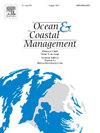Impacts of climate change on the distribution of the Pacific red snapper (Lutjanus peru) in Mexico
IF 4.8
2区 环境科学与生态学
Q1 OCEANOGRAPHY
引用次数: 0
Abstract
In Mexico, the marine finfish fishery is multi-specific, and its effort is directed to species of commercial interest. The snappers group stands out with the species Lutjanus peru, which is most valued in the Mexican Pacific Ocean. The snapper fishery lacks specific regulatory measures for its management and is threatened by overfishing and climate change. The impact of climate change is one of the main challenges for marine species and coastal communities whose livelihoods depend on fisheries presence and abundance. Predictions indicate a migration of tropical species to the poles, so it is crucial to generate scenarios that forecast future changes in these fishery resources and generate adaptation measures for the communities that depend on them. Our study aimed to evaluate climate change impacts on the snapper fishery through ecological niche modeling and habitat suitability models. We modeled the future distribution of L. peru for 2050 and 2100 under two climate change scenarios (SSP126 and SSP585) and analyzed the impact on the fisheries from distribution changes and the dependence of this resource by coastal communities according to official catch records in the fishery offices along the Mexican Pacific. The results show that in the worst scenario (SSP585 to 2100), the zones with the highest and moderate negative impacts are located in around 24 fishery offices where 68% of the catch and 72% of the income occur, increasing the vulnerability of fishing communities due to the reduction in catches and greater fishing effort to compensate for losses. However, most models indicate low and positive impacts, as an increase in the species’ presence is expected in the northern Mexican Pacific Ocean due to a temperature rise. When allocated appropriately, government subsidies can strengthen resilience of fishing communities, by prioritizing the most vulnerable communities and users. Subsidies should focus on eliminating poverty and hunger, decreasing inequality, and promoting mitigation and adaptation in the face of climate change impacts.
气候变化对墨西哥太平洋红鲷分布的影响
在墨西哥,海洋鱼类渔业是多品种的,其努力是针对具有商业利益的物种。鲷鱼群中最突出的是秘鲁Lutjanus,它在墨西哥太平洋最受重视。鲷鱼渔业缺乏具体的管理管理措施,并受到过度捕捞和气候变化的威胁。气候变化的影响是海洋物种和沿海社区面临的主要挑战之一,它们的生计依赖于渔业的存在和丰富程度。预测表明热带物种正在向两极迁移,因此,制定预测这些渔业资源未来变化的情景并为依赖这些资源的社区制定适应措施至关重要。本研究旨在通过生态位模型和生境适宜性模型来评估气候变化对鲷鱼渔业的影响。根据墨西哥太平洋沿岸渔业办公室的官方捕捞记录,模拟了两种气候变化情景(SSP126和SSP585)下秘鲁L.在2050年和2100年的未来分布,并分析了分布变化对渔业的影响以及沿海社区对该资源的依赖。结果表明,在最坏情景(SSP585 - 2100)中,负面影响最大和中等程度的区域位于约24个渔场,这些渔场占渔获量的68%和收入的72%,由于渔获量的减少和为弥补损失而加大的捕捞努力,增加了渔业社区的脆弱性。然而,大多数模式显示出低而积极的影响,因为由于温度上升,预计该物种在墨西哥太平洋北部的存在将增加。如果分配得当,政府补贴可以优先考虑最脆弱的社区和用户,从而增强渔业社区的复原力。补贴应侧重于消除贫穷和饥饿、减少不平等以及促进应对气候变化影响的缓解和适应。
本文章由计算机程序翻译,如有差异,请以英文原文为准。
求助全文
约1分钟内获得全文
求助全文
来源期刊

Ocean & Coastal Management
环境科学-海洋学
CiteScore
8.50
自引率
15.20%
发文量
321
审稿时长
60 days
期刊介绍:
Ocean & Coastal Management is the leading international journal dedicated to the study of all aspects of ocean and coastal management from the global to local levels.
We publish rigorously peer-reviewed manuscripts from all disciplines, and inter-/trans-disciplinary and co-designed research, but all submissions must make clear the relevance to management and/or governance issues relevant to the sustainable development and conservation of oceans and coasts.
Comparative studies (from sub-national to trans-national cases, and other management / policy arenas) are encouraged, as are studies that critically assess current management practices and governance approaches. Submissions involving robust analysis, development of theory, and improvement of management practice are especially welcome.
 求助内容:
求助内容: 应助结果提醒方式:
应助结果提醒方式:


